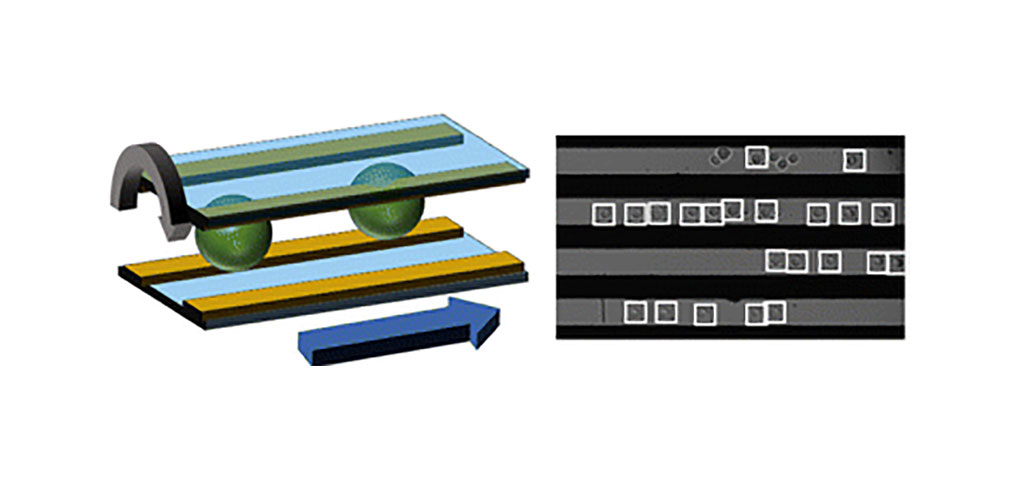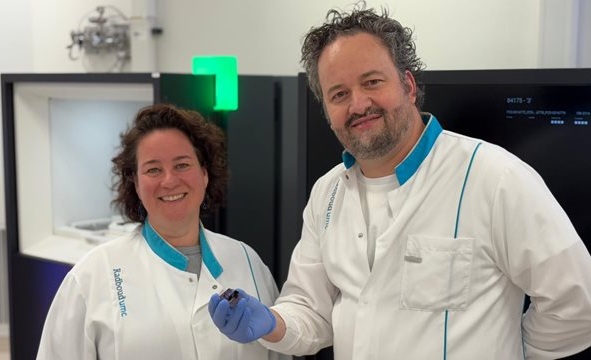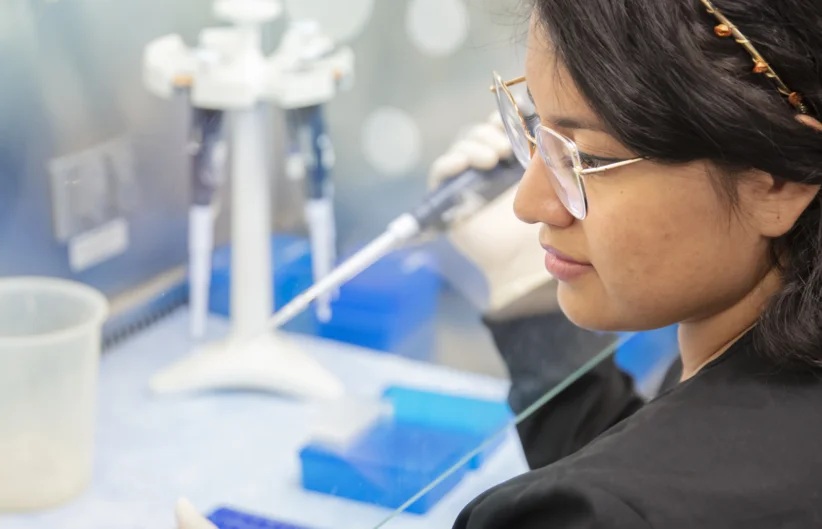Automated Device for Non-Invasive Measurement of Cells’ Electrical Properties to Advance Cancer Diagnosis
Posted on 12 Dec 2023
Effective monitoring of cancer cells is crucial for physicians in guiding treatment and managing the disease, potentially reducing cancer-related mortality. Non-invasive diagnostic platforms that measure the electrical properties of cancer cells show promise for early detection of drug resistance and metastasis in cancer. Earlier studies have found that the type of cancer and its drug resistance status can be understood from cellular permittivity and conductivity data. As a result, there is a growing need for analytical methods that can quickly measure these electrical properties of cells. Electrorotation (ROT) is one method that can capture these cellular properties by analyzing permittivity and conductivity based on how a cell moves in an electric field. This method characterizes cell types and states by profiling their frequency-dependent rotational movement under a modulated electric field. However, traditional ROT methods have limitations, primarily the cumbersome process of capturing, measuring, and replacing cells, which reduces the throughput – the number of cells analyzed over time.
To overcome these challenges, researchers from Tokyo University of Science (TUS, Tokyo, Japan) have developed a continuous flow ROT (cROT) system that incorporates microfluidics to continuously measure cellular dynamics while simultaneously capturing cells on a single device. The researchers designed the device with interdigitating electrodes to induce cell rotation and included a microchannel for cell passage. The geometry of these electrodes enhances the number of cells analyzed and reduces the time needed for cell replacement as measurements are collected. The electric field within the microchannel allows for the analysis of rotational behavior from a continuous flow of cells, boosting the automated system's throughput.

In validation studies, the cROT device significantly outperformed traditional ROT platforms in terms of throughput. While conventional ROT methods process about 10 to 20 cells per hour, the cROT system can handle up to 2700 cells per hour, a more than 100-fold increase. Additionally, it greatly reduces the time needed for cell replacement. Other benefits include the system's high level of automation and its ease of installation or removal. The researchers expect the rapid and accurate analyses enabled by this innovative method to drive significant progress in cancer drug development, diagnostics, and new cell-based therapies. This groundbreaking technology paves the way for collaborations and adoption by key players in the oncology field, potentially transforming cancer treatment strategies.
"With our cROT technique, we've unlocked the ability to delve into the subtle intricacies of single-cell dynamics, including aspects like cell physiology, the state of the cell membrane, and the concentration of intracellular ions," said Dr. Masahiro Motosuke, a Professor in the Department of Mechanical Engineering at TUS and the project's Principal Investigator.
Related Links:
TUS















